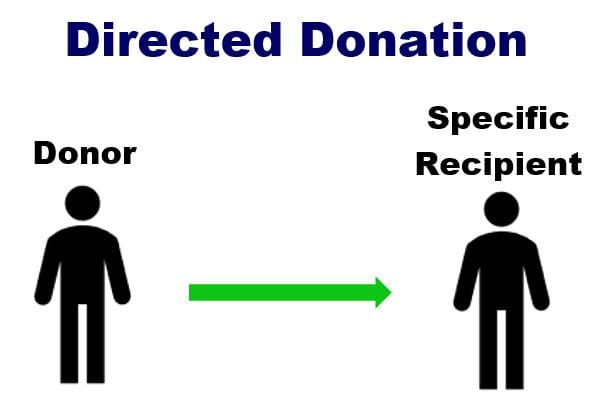Living Liver Donation
Overview of Living Liver Donation
A living liver donation occurs when a living person donates a portion of their healthy liver for transplant to a person who is in end-stage liver disease. The liver is the only organ in the body that will regrow to full size and functionality. The transplanted partial liver will replace the recipient’s diseased liver and also grow to full size and functionality in just 6 to 8 weeks.
Liver transplants account for about 11% of the need for people on the national transplant waiting list. While this a smaller percentage than those in need of a kidney, liver transplant is the only hope for long-term survival for a person with liver failure. Unlike a dialysis machine that can replace kidney function for those with kidney failure, no device can replicate the functions of the liver, even for a short time.
Living liver donors may be related to the recipients, but successful matches do not require a genetic link. Living liver donors can be spouses, other family members, friends, neighbors, coworkers or complete strangers.
Living donors must be at least 18 years old and in good physical and mental health, with a BMI below 35; they may not engaged in active substance abuse, and must have normal, healthy liver function. Certain medical or untreated mental health conditions that may prevent some people from becoming a living liver donor. However, the transplant center will conduct thorough examinations and screenings to determine a potential donor’s eligibility. If you’re interested, let the medical professionals determine if you’re able to donate.
Living liver donation has several advantages over deceased liver donation. First, the transplant of a partial liver from a living donor has a greater likelihood of being successful, both immediately after transplant and long-term. Second, transplant from a living liver donor allows time for screening to make the best possible match; the transplanted organ is healthier as a result of a planned, scheduled transplant. Living kidney donation is desperately needed to meet the critical need!
Types of Living Liver Donation
There are two types of living liver donation – directed and non-directed donation. Transplant centers are also beginning to use “paired exchange,” “split liver transplants,” and “donor chain” strategies for liver donations. These approaches are commonly used for living kidney donations, but are not yet common practice for living liver donations. Only a small number of transplant centers have the expertise required for these techniques.
Directed Donation
This is the most common and occurs when the living donor identifies a specific liver donation recipient. Potential donors will be tested to determine if they are a match to the intended recipient, removing the recipient from the national transplant waiting list.
Non-directed Donation
This type of donation is also called anonymous or altruistic donation and occurs when the living donor does not name a recipient. The intent is for the liver donation to go to best matched recipient from the national transplant waiting list.


Common Questions & Concerns
How do I know if I am eligible to be a liver donor? Transplant specialists will conduct a number of screenings and tests to ensure that you are healthy enough to donate. These include thorough medical history and examinations, diagnostic testing, and psychological evaluations. EMS Gives Life can assist you in connecting with an experienced liver transplant program to begin initial screening.
How can I lead a healthy, normal life with a partial liver? Due to the liver’s unique ability to regrow to full size and function just weeks after partial removal, you will not need to live long-term with a partial liver after donation. You can l lead a healthy, normal life with a full liver. The portion of your liver that was removed and transplanted will also grow to full size and function, allowing the liver donation recipient to lead a healthy life as well.
Do I have to be biologically related to the recipient to donate a portion of my liver? Do we have to have the same blood type? The answer in both cases is no. You do not need to be biologically related to the recipient; you can be family, spouse, friends or even a total stranger. Nor do you need to be a blood group match with the recipient. This was a requirement in the past but that is no longer the case.
Are there any out-of-pocket costs for donors? Costs associated with the medical expenses of evaluation, testing, surgery, and immediate post-operative care are typically covered by the recipient’s health insurance. All transplant programs will evaluate what is covered by the recipient’s insurance in advance of any procedures. Expenses such as lost wages, travel, and lodging are not covered by insurance. If your employer provides disability coverage, you will most likely be entitled to disability pay. There are some needs-based programs available to reimburse donors for many out-of-pocket expenses. EMS Gives Life will work with potential donors to remove any financial obstacles to living liver donation.
What is involved in the surgery? How long is the recovery? The percentage of the donor’s liver that is removed depends on the age and size of the recipient. As much as 50-60% of the liver can be removed safely. Typical hospital stays last one week following surgery, with another six to eight weeks for full recovery, allowing time for your liver to regenerate. Depending on the physical demands of their work, donors may need to arrange for light duty alternatives for a period of time determined by the doctor. Most donors return to a normal life within 2 to 3 months after surgery. EMS Gives Life can assist donors and their employers in developing a safe return-to-work plan.
Ready to learn more?
We’ll make time to answer your questions and help you make the connections needed to continue exploring becoming a living liver donor. Contact us!
Sign Up for Updates
Follow Us